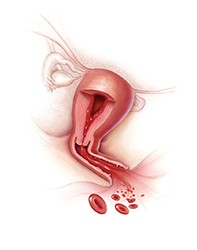Peer Reviewed
Women's health
What’s new in the management of heavy menstrual bleeding?
Abstract
A number of effective conservative treatment options are now available for women with heavy menstrual bleeding and these should be considered prior to surgical intervention.
Key Points
Abnormal uterine bleeding may be divided into two categories: organic and nonorganic. Nonorganic causes are usually attributed to a hormone imbalance, an unknown physiological process or end-organ response, or to causes such as stress. Organic causes include coagulopathies, endocrinopathies, adrenal disorders, polycystic ovarian syndrome, fibroids, polyps, endometrial hyperplasia and malignancy (see the box on page 62).
Many terms have been used to describe nonorganic abnormal uterine bleeding, including dysfunctional uterine bleeding, menorrhagia, polymenorrhoea and metrorrhagia. However, heavy menstrual bleeding is now the preferred term over these historic descriptions.
Purchase the PDF version of this article
Already a subscriber? Login here.

